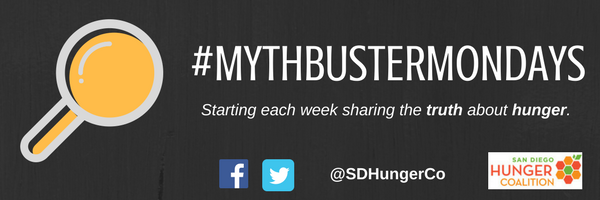#MythbusterMonday - December 2017 Myths Busted!
/We begin each week using our online voice to debunk myths about hunger. Our #MythbusterMonday social media series dispels misinformation and stigma commonly associated with food assistance programs like CalFresh/SNAP and school meals and the people who rely on them to help put food on the table.
What hunger myths have you heard? Join us in sharing the truth about hunger each Monday using the hashtag #MythbusterMonday.
In December, we busted the following hunger myths:
December 4
The first Monday of the month we take a look back at the myths busted the previous month. Check out the myths we busted in November 2017. Click here.
December 11
#MythBusterMonday "Too many people take advantage of CalFresh/SNAP benefits." False! After unemployment insurance, CalFresh/SNAP is the most responsive federal program available to provide additional assistance during economic downturns. Enrollment expands when the economy weakens and contracts when the economy recovers.
December 18
#MythbusterMonday "Breakfast in the Classroom makes a mess." False! Many teachers and principals say that any mess or trash issues can be overcome with a smart system. Creating roles and opportunities for students to clean up after themselves can make breakfast a simple experience. Click here to read more from No Kid Hungry.
December 25
#MythbusterMonday “Government assistance is a waste of money and doesn't accomplish its goals.” False! Poverty rates would likely double without safety net programs like CalFresh/SNAP and add to human suffering. Last year, the safety net lifted 38 million people, including 8 million children, out of poverty. Click here to read more myths about poverty.






